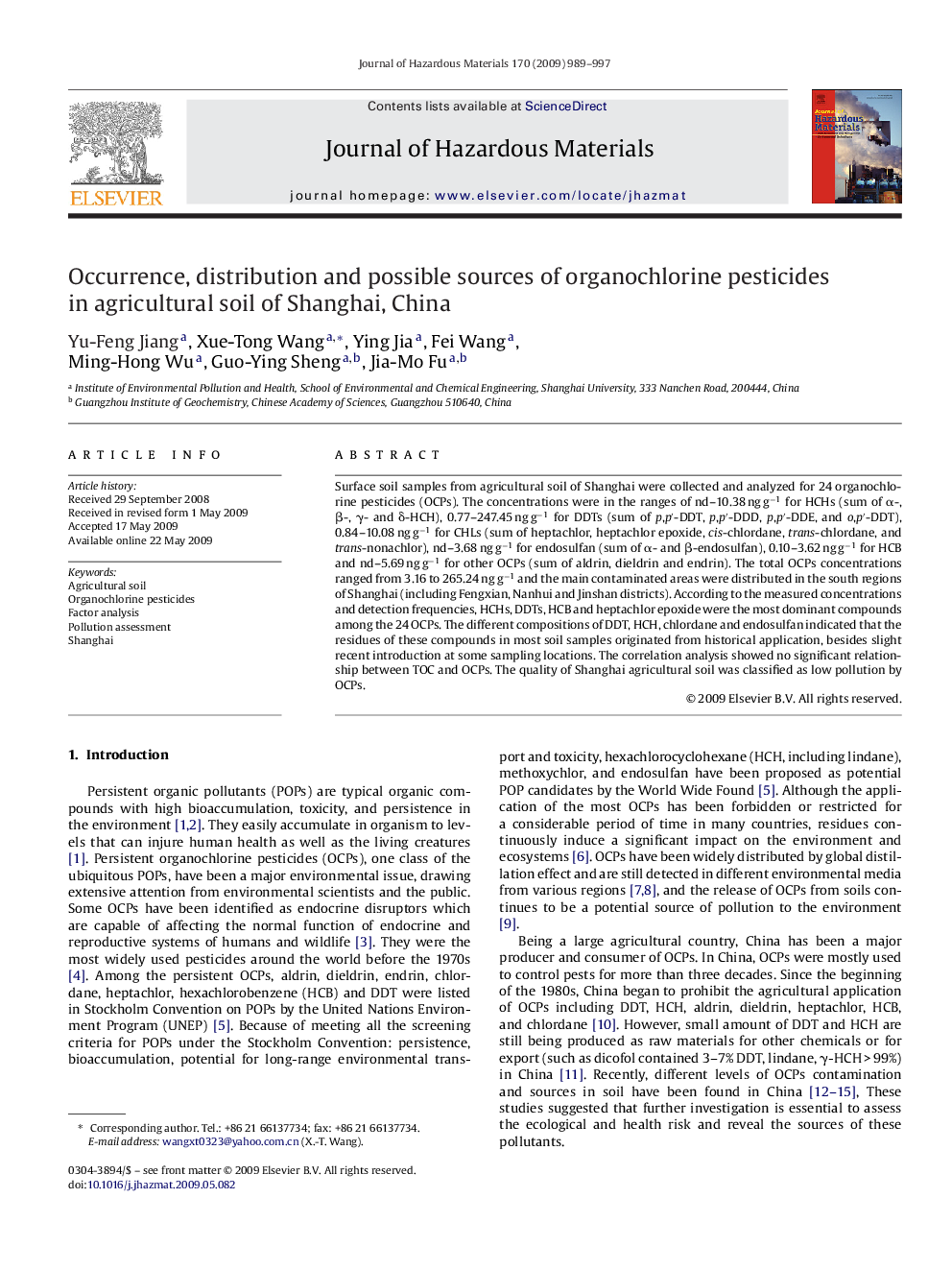| Article ID | Journal | Published Year | Pages | File Type |
|---|---|---|---|---|
| 581264 | Journal of Hazardous Materials | 2009 | 9 Pages |
Abstract
Surface soil samples from agricultural soil of Shanghai were collected and analyzed for 24 organochlorine pesticides (OCPs). The concentrations were in the ranges of nd-10.38 ng gâ1 for HCHs (sum of α-, β-, γ- and δ-HCH), 0.77-247.45 ng gâ1 for DDTs (sum of p,pâ²-DDT, p,pâ²-DDD, p,pâ²-DDE, and o,pâ²-DDT), 0.84-10.08 ng gâ1 for CHLs (sum of heptachlor, heptachlor epoxide, cis-chlordane, trans-chlordane, and trans-nonachlor), nd-3.68 ng gâ1 for endosulfan (sum of α- and β-endosulfan), 0.10-3.62 ng gâ1 for HCB and nd-5.69 ng gâ1 for other OCPs (sum of aldrin, dieldrin and endrin). The total OCPs concentrations ranged from 3.16 to 265.24 ng gâ1 and the main contaminated areas were distributed in the south regions of Shanghai (including Fengxian, Nanhui and Jinshan districts). According to the measured concentrations and detection frequencies, HCHs, DDTs, HCB and heptachlor epoxide were the most dominant compounds among the 24 OCPs. The different compositions of DDT, HCH, chlordane and endosulfan indicated that the residues of these compounds in most soil samples originated from historical application, besides slight recent introduction at some sampling locations. The correlation analysis showed no significant relationship between TOC and OCPs. The quality of Shanghai agricultural soil was classified as low pollution by OCPs.
Related Topics
Physical Sciences and Engineering
Chemical Engineering
Chemical Health and Safety
Authors
Yu-Feng Jiang, Xue-Tong Wang, Ying Jia, Fei Wang, Ming-Hong Wu, Guo-Ying Sheng, Jia-Mo Fu,
